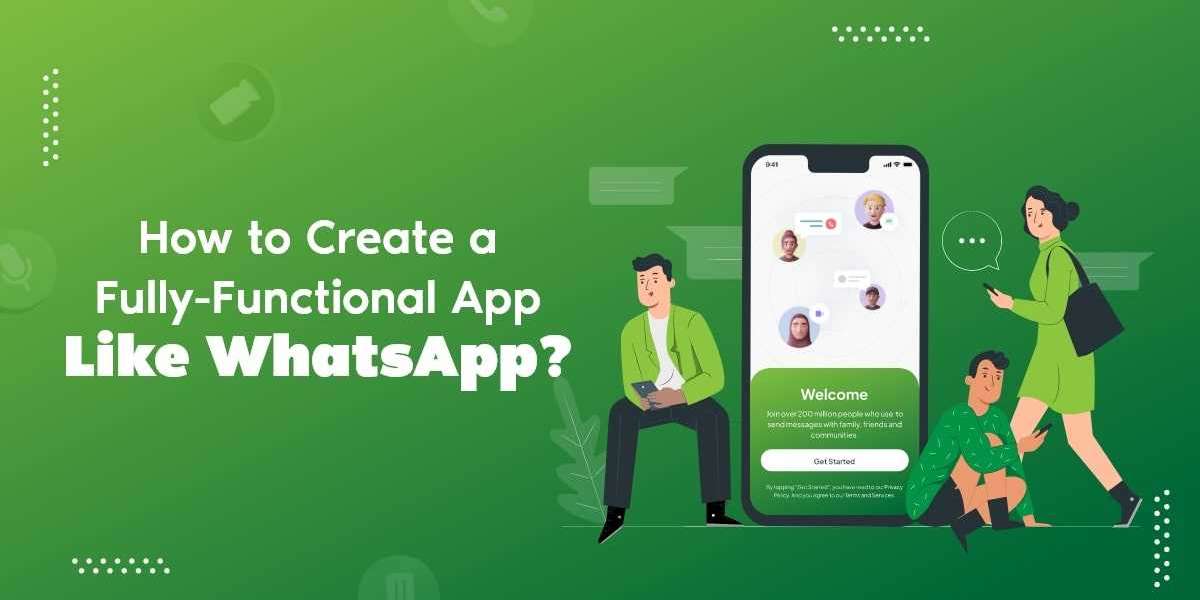In the era of instant communication, developing an app akin to WhatsApp requires a strategic approach, blending innovation, user experience, and robust technology. In this comprehensive guide, we'll navigate the intricate process, providing valuable insights and practical steps to help you embark on the journey of creating a messaging app that rivals the likes of WhatsApp.
1. Conduct In-Depth Market Research:
Before diving into development, conduct thorough market research. Understand user expectations, preferences, and identify unique features that set WhatsApp apart. Analyze competitors and pinpoint opportunities for differentiation.
2. Define Your Unique Value Proposition:
Differentiate your app by offering a unique value proposition. Whether it's enhanced security, innovative messaging options, or user-friendly features, clearly define what sets your app apart in the crowded messaging app landscape.
3. Design a User-Centric Interface:
Craft an intuitive and visually appealing user interface (UI). Prioritize simplicity and ease of navigation. WhatsApp's success lies in its user-friendly design, so ensure your app offers a seamless experience for users.
4. Choose the Right Technology Stack:
Select a technology stack that aligns with your app's goals. Consider cross-platform development tools like React Native or Flutter for efficiency. Ensure your technology stack supports real-time messaging and scalability.
5. Implement Real-Time Messaging Features:
Central to any messaging app is a robust real-time messaging system. Implement features like text messaging, multimedia sharing, voice, and video calls. Ensure reliability and efficiency in delivering messages across diverse network conditions.
6. Prioritize Security Measures:
Security is paramount in messaging apps. Implement end-to-end encryption to safeguard user data and conversations. Assure users that their privacy is a top priority, and integrate features that enhance security.
7. Optimize for Cross-Platform Compatibility:
To reach a broader audience, optimize your app for both iOS and Android platforms. Ensure a consistent user experience while adapting to the unique characteristics of each platform.
8. User Authentication and Registration:
Develop a seamless user authentication and registration process. Prioritize user privacy by allowing secure and straightforward registration while incorporating multi-factor authentication for added security.
9. Testing and Quality Assurance:
Thoroughly test your app at each development stage. Conduct beta testing with a diverse group of users to gather feedback on usability and identify any bugs or glitches. Continuous testing ensures a polished final product.
10. Launch and Marketing Strategy:
Plan a strategic app launch. Leverage social media, influencer partnerships, and app store optimization to generate visibility. Implement a pre-launch campaign to build anticipation and attract early users.
11. User Feedback and Iteration:
After launch, actively seek user feedback. Analyze app analytics to understand user behavior and preferences. Use this data to iterate and improve your app, incorporating user suggestions and addressing any issues promptly.
12. Stay Informed and Update Regularly:
The tech landscape evolves rapidly. Stay informed about emerging trends, user preferences, and technological advancements. Regularly update your app to incorporate new features, enhance security, and stay relevant in the competitive market.
Embarking on the journey how to develop an app like WhatsApp requires a meticulous blend of technological proficiency, user-centric design, and a commitment to continuous improvement. By following these steps and staying attuned to user feedback, you can craft a messaging app that not only meets but exceeds the expectations of users in the dynamic landscape of mobile applications. Happy coding!








